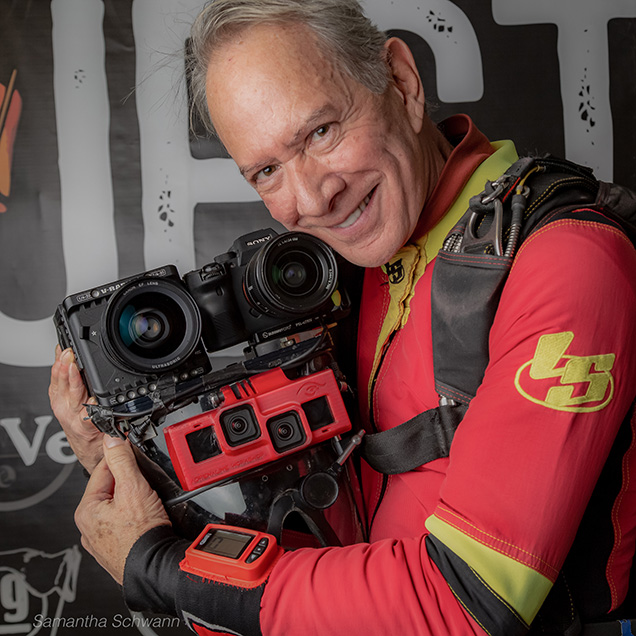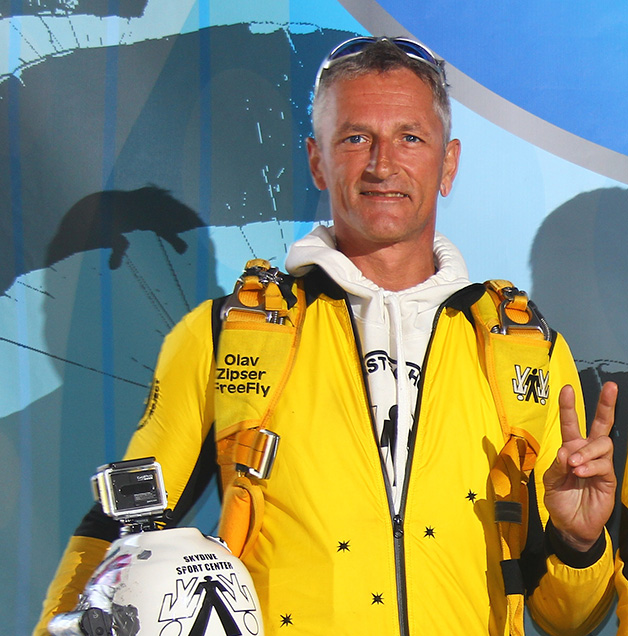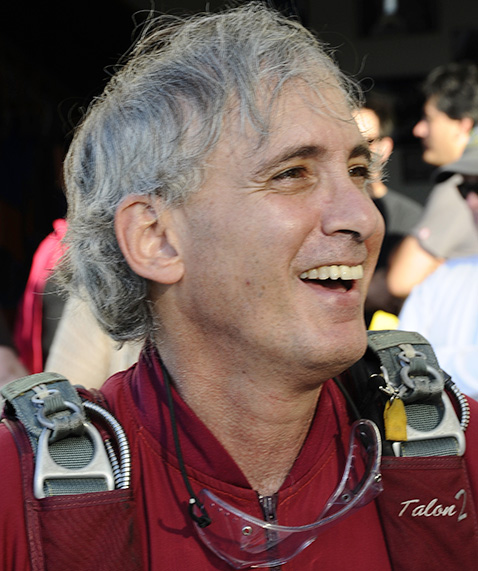The 2024 International Skydiving Hall of Fame Celebration takes place September 26-28 at Skydive Chicago in Ottawa, Illinois. The drop zone last hosted the event in 2013. Illinois has a rich skydiving history and is probably best known for hosting the World Free Fall Convention in Quincy (and later in Rantoul). The convention topped out at some 5,700 skydivers, the most ever gathered at a DZ at one time and something that will probably never be repeated.
As in the past, the Hall of Fame celebrations will include several activities, including fun jumping all weekend, a sport accuracy competition, a flag skydive featuring representatives from the Hall of Fame’s member nations, a barbecue and a dance party. Also scheduled are fireside chats, seminars and a pyrotechnic display by the International Skydiving Museum Demo Team.
In addition to the Hall of Fame induction ceremonies, the event will include three other significant honors: The Path of Excellence and the Pioneers of Excellence Awards, as well as the Trustees Award. The Jump for The Cause Women’s World Record Team, which built Fédération Aéronautique Internationale Women’s World Records for Largest Formation Skydive (1999, 2002, 2005 and the 181-way in 2009 that still stands as the record today), is receiving the 2024 Path of Excellence Award. Each JFTC event raised hundreds of thousands of dollars for breast cancer research and awareness organizations.
The 2024 Pioneers of Excellence Award pays tribute to the 1972 Jerry Bird’s All-Stars relative work (now called formation skydiving) team. Five years after he founded his world-class “10-man” team, Bird organized the first 24-way formation over Perris, California. The achievement landed all the participants a guest appearance on the popular TV program “I’ve Got a Secret,” introducing high-performance skydiving to a large audience.
International Skydiving Museum & Hall of Fame Ambassador #77, Marshall Madden, will receive the Trustees Award “for voluntarily contributing services or making other gestures of goodwill to the skydiving museum in furtherance of its principles and objectives.”
After a weekend of skydiving activities, the International Skydiving Hall of Fame Induction Ceremony takes center stage at the Tinley Park Convention Center (about an hour from the drop zone), continuing the tradition of honoring legends, leaders and pioneers of our sport. More than 400 skydiving enthusiasts from around the world will be in attendance, and the fundraiser is expected to raise more than $100,000 for the museum. The six incoming members of the 15th class of honorees—three from the U.S., two from Germany and one from Mexico—bring this exclusive group to a total of 108 outstanding representatives of sport parachuting.
The newest members of the Hall of Fame, in alphabetical order, are:
Guilfoyle_Lee-IMG_9403.jpg) Photo by Tim Telford.
Photo by Tim Telford.Lee Guilfoyle
USA (posthumous)
Guilfoyle, D-50, made his first jump in 1957 when he was in his early 20s and continued jumping well into his 80s. Over his more than 60 years in the sport, he amassed more than 2,600 jumps. Guilfoyle had numerous accomplishments—he was a freefall photographer for TV programs, movies and commercials; DZ manager; and competition judge. He also served nine years in the U.S. military (first in the Navy, then as an Army Ranger). However, it was his work as an innovator and test jumper that uniquely qualifies him for induction into the Hall of Fame.
Guilfoyle had a simple formula for invention and testing: He would talk about something, write an idea on a napkin, sew the device together and if it opened twice with “Sam the Dummy,” then he would jump it. Guilfoyle was the first person in the world to jump what is the forerunner of today’s modern square canopy: the Barish Sailwing. (He was so sure that the Sailwing would fail, however, he first tested it with two reserves.) This was no small feat, as he endured 22 malfunctions during 65 test jumps.
Guilfoyle also is renowned for his contributions to safety, most notably the pilot-chute-assist attachment for static-line rigs, which made student jumps much safer. In 1972, future Hall of Famer Jacques-André Istel (for whom Guilfoyle once managed the Lakewood Sport Parachute Center in New Jersey) presented him with the A. Leo Stevens Parachute Medal, a top American parachuting honor. By this time, the Federal Aviation Administration had adopted the pilot-chute-assist device as a requirement for students. The FAA also appointed Guilfoyle to be the project manager to develop an automatic opening device for reserves. He made 200 test jumps on an early system that was the predecessor of today’s automatic activation devices that are in standard use.
Guilfoyle passed away in his sleep in September 2022.
 Photo by Samantha Schwann.
Photo by Samantha Schwann.Norman Kent
Mexico
Kent, D-8369, made his first parachute jump in Mexico in August 1975 at only 19 years old. He was immediately hooked. He made his first camera jump on jump 27, and he has worn a camera on his helmet on most of his more than 30,000 skydives (and counting) since. When he was still relatively inexperienced, Parachutist published one of his photos as its centerfold. Since then, Parachutist has featured his still photos on its cover dozens of times (and in its interior countless times), as have numerous international magazines.
Kent produced his first in-house skydiving film, “Ride a Cloud,” in 1981, followed by “Freak Brothers Convention” (1982) and “The World Champion Air Bears” (1985). His 1987 production, “From Wings Came Flight,” featured beautifully choreographed, color-coordinated skydiving that revolutionized the sport with the introduction of freestyle, which opened the door to three-dimensional flight and the disciplines that followed. He produced “Kinesthesia” in 1991 and “Willing to Fly,” a film that showed the power of Kent’s intentional film design and inspired many with an in-depth look into our magical sport, in 1997.
Kent’s skill as a camera flyer led to commissions for shooting feature films, television programs and various print media. He has filmed and coordinated aerial sequences in popular Hollywood productions such as “Cliffhanger,” “Terminal Velocity,” “Eraser,” “Drop Zone,” “Get Smart,” “Cutaway” and “Kingsman,” to name a few. His films—both in-house and Hollywood—have motivated countless people to try the sport and many former jumpers to make a comeback.
Among his many adventures, Kent has been a photographer for numerous skydiving world records in most disciplines since 1978, was part of the first skydiving expedition to the North Pole and was a member of the team responsible for the live transmission of skydiving in to the Olympics opening ceremony in Seoul, Korea. The Hall of Fame inducted his wife, Deanna “Skydancer” Kent, who predeceased him, in 2022.
Donald W. Kirlin
USA
Kirlin, D-5372, made his first jump in Greeley, Colorado, in 1973. He was the founder of Sky’s West Parachute Center in Loveland, Colorado, where he was the pilot, jumpmaster and instructor from 1979 to 1984. He was also one of the first tandem masters, working with equipment from Hall of Famer Bill Booth’s company, the Relative Workshop (now United Parachute Technologies).
Kirlin is perhaps best known by skydivers as the creator and organizer of the World Free Fall Convention, which took place in Quincy, Illinois, from 1990 to 2001 and Rantoul, Illinois, from 2002-2006. It was a huge event that reached its peak in 2000, when more than 5,700 attendees from all 50 U.S. states and 55 countries made some 63,000 jumps. The convention featured jumps from specialty aircraft such as the Boeing 727, Super Constellation, B-17 Flying Fortress, various helicopters and balloons and even a blimp. Over the years, the World Free Fall Convention raised more than $100,000 for various local charities. It was—and still is—the largest skydiving event ever held.
Kirlin is also an extremely accomplished professional pilot. With more than 17,000 hours of cockpit time, he has several ratings, including an Airline Transport Certificate. He flew for American Airlines, and is type-rated in a wide range of aircraft from the Boeing 737 to the MIG 29, as well as blimps and helicopters. His private company, Air USA, which provides aircraft used as air adversaries in military training, is the largest of its kind, with 90-plus tactical jet fighters in its fleet. Kirlin was also president of the Classic Jet Aircraft Association in 1997 and 1998, and he was inducted into the Smithsonian Air and Space Museum Board of Directors for 2014 and 2015. The Illinois Aviation Hall of Fame inducted Kirlin in 2022.
On hearing of his election to the International Skydiving Hall of Fame, he said, “I am truly honored to become a member of this very exclusive group. Hosting the WFFC for 17 years was both a privilege and an honor to bring a great variety of unique and unusual aircraft to the skydiving community ... and a whole lot of fun, too.”
Katharina “Käthe” Paulus
Germany (posthumous)
Käthe Paulus was probably the most accomplished woman aviator in Europe in the late 1800s and early 1900s and made contributions to parachuting that reverberate to this day. As a balloonist, she was the first professional German airship pilot, although she later learned to fly powered airplanes. Still, few people outside of the skydivers in her native country have heard of her.
Paulus, who was a trained seamstress, began her aviation career a decade before the Wright Brothers stunned the world. Her first jump was from a balloon flying at 3,600 feet in the summer of 1893. She is thought to be the third woman in the world to have made a balloon jump and is considered the first person (male or female) to be a professional demonstration jumper. An accomplished aerialist with a daredevil act, Paulus was a star who made nearly 150 exhibition jumps.
At first using her tailoring experience to manufacture and repair balloons, Paulus went on to build parachutes and drastically improved their design. She developed a method of organizing and separating parachute lines, as well as folding and bagging the canopy, that allowed parachutes to function more reliably. She patented her invention of this system and the military became interested. In 1916, Paulus began a canopy manufacturing company that produced some 7,000 emergency parachutes for use by German military airmen during the first World War. Her device is credited with saving the lives of several balloonists whose airships were shot down. For this service, Paulus received the Prussian Cross of Merit for War Aid in 1917.
Bobby “Spider” Wrenn
USA (posthumous)
The U.S. Army Parachute Team—known as the Golden Knights—selected Bobby “Spider” Wrenn, D-469, to be a member in 1966. (Previously, he was a drummer with the 440th Army Band.) Just three years after joining the team, his peers unanimously voted for him to receive the Golden Knight of the Year Award. During his two stints with the Knights (1966-1969 and 1977-1981), he was instrumental in developing high standards for both the competition and exhibition teams.
In 1969, Wrenn left the Knights to serve a tour in Vietnam, and upon his return to Fort Bragg—the home of the Golden Knights—he managed the 82nd Airborne Division Parachute Club. In 1974, USPA appointed Wrenn to serve as the U.S. Team Leader at the inaugural Fédération Aéronautique Internationale World Cup of Relative Work (now called formation skydiving), which took place at Fort Bragg.
Three years later, in 1977, Wrenn took command of the Knights as first sergeant, a position he held until 1981. His leadership inspired dozens of team members to greatness. To date, the Golden Knights competition teams have won an impressive 54 national and 45 world skydiving titles in various disciplines, creating more than 460 national champions and 100 world champions. There is no other team in the history of skydiving that extends so far into almost every aspect of the sport.
Wrenn remained active in the Golden Knights Alumni Association throughout his life. In 2010, the U.S. Army Parachute Team named its day room after Wrenn, honoring his half century of contributions to the sport. Wrenn passed away in 2014.
 Photo by Ori Kuper.
Photo by Ori Kuper.Olav Zipser
Germany
Zipser, D-11733, “the Father of Freefly,” was one of the first Europeans to learn to skydive through the accelerated freefall program, which in 1986 was a new and innovative method of student instruction. For Zipser, newness and innovation did not stop there. By the early 1990s—after becoming an AFF instructor (as well as a tandem instructor) himself—he began experimenting with non-traditional forms of body flight. This 3-D flying style became known as freeflying.
As Zipser honed his skills, he promoted this new method of flight and helped others learn how to perform it. Zipser founded the Free Fly Training and Instruction Program, The First School of Modern Sky Flying and the Atmosphere Dolphin Freefly License Program (in-flight tests to demonstrate jumper proficiency flying in various orientations). Through the ‘90s, as the popularity of freeflying bloomed worldwide and jumpers became more skilled, Zipser urged organizations to include it as a competitive discipline. Zipser founded the Space Games freefly competition in 1997, and in 2000, the Fédération Aéronautique Internationale added freeflying as a competitive event. Zipser has won more than 50 international medals in freefly events and has trained multiple world champions. He even won an Emmy for his work on ESPN’s “X-Games.”
In addition to his innovations in freeflying, Zipser jumped from the stratosphere (47,000 feet) in 1995. He is the founder of the FreeFly Astronaut Project, an endeavor to enable future space travelers to return safely from high altitudes or low Earth orbit.
 About the Author
About the Author
Doug Garr, D-2791, is an author and journalist who made his first jump in 1969. He is a trustee-at-large for the International Skydiving Museum & Hall of Fame and has written every Parachutist article about the inductees since the first one 15 years ago.